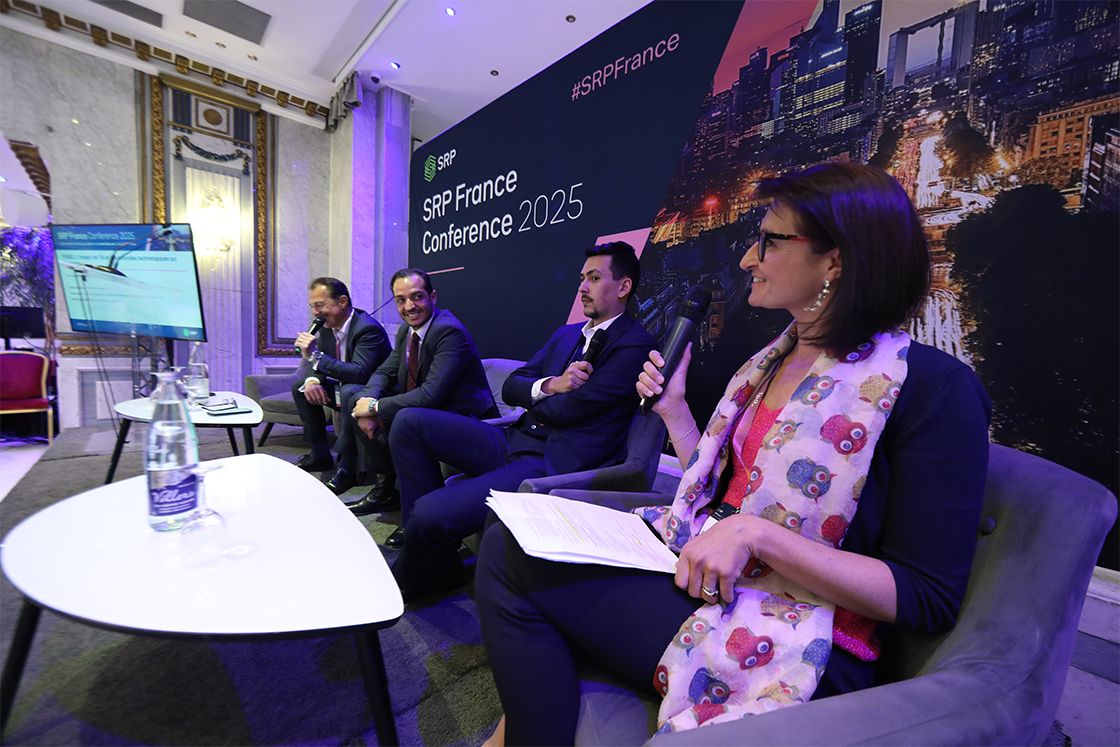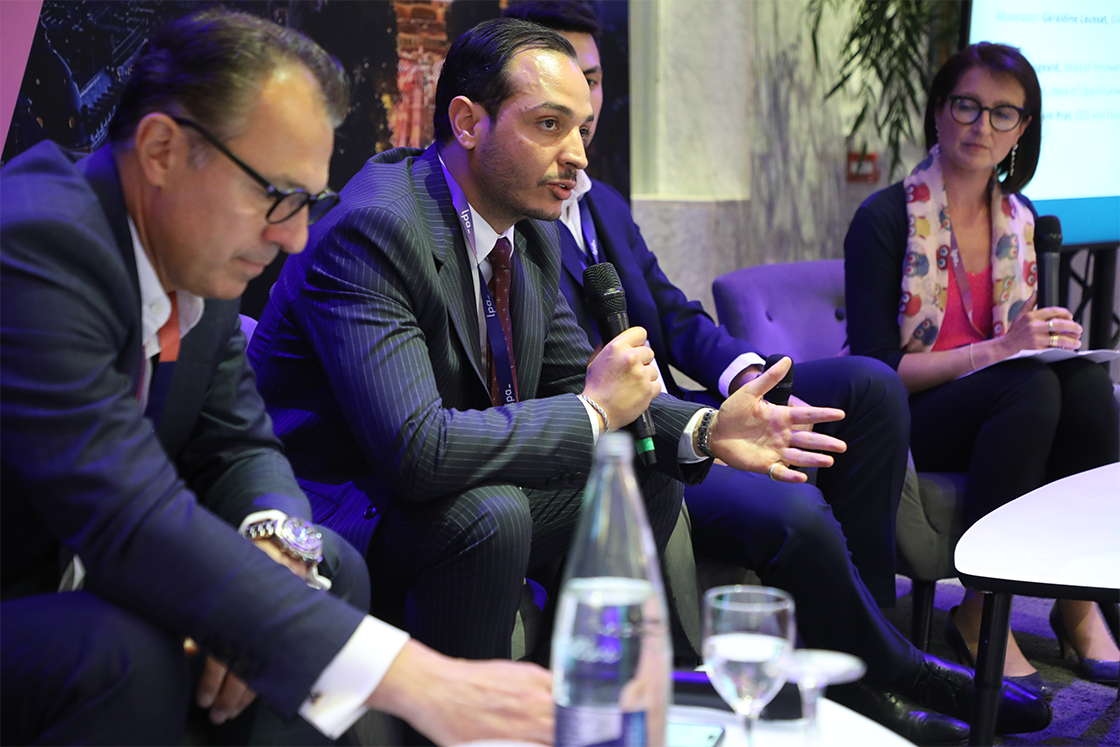Panellists at the Impact of AI and Tech Advancements panel at the France 2025 conference this week discussed how AI and advanced technologies are driving further growth in the structured products industry, and the importance of automation in managing products from design to sale.
While technology remains at the forefront of structured product market, it has evolved from being used as a simple lifecycle management tool to being leveraged as a tactical tool in many different areas, according to Géraldine Laussat (pictured), global head of structured products at OTCX.
There has been a change in behaviour born out of the need to react to market changes a lot more quickly - Géraldine Laussat, OTCX
“There has been a change in behaviour born out of the need to react to market changes a lot more quickly, for instance, to automate pricing for issuers,” she told delegates. “But this is something we also see right through the product lifecycle, from pre-trade to execution to post-trade.”
Linking up parts of the product workflow could prove a more difficult task for those firms which have been around for a while, as different parts of the process operate in a more fragmented manner. For those younger companies, artificial intelligence (AI) would directly be at the centre of strategies, being used to solve problems more quickly and efficiently.
Left to right: Nicolas Gaumont-Prat, LinkedTrade; Farès Ghemari, Altitude Investment Solutions Suisse; Charles Bougeard, AYDO; and Géraldine Laussat, OTCX.
Pre-trade game changer
For Farès Ghemari, head of quantitative solutions and platform, at Altitude Investment Solutions Suisse, AI now goes beyond the execution of lines of code because of its ability to learn from the data it is fed, especially in the pre-trade space.
“Most platforms now have a pricing module which can determine which pricing structures deliver the best returns dependant on the client profile and risk appetite,” he told attendees. “This is turn means we can refine the solutions being put in front of them to facilitate decision-making.”
Nicolas Gaumont-Prat (pictured), CEO and founder of LinkedTrade, noted that it is important to distinguish between the different types of AI that have existed over time.
Classic AI is the first iteration, used in linear regression and large language models that help to predict and classify information.
“At LinkedTrade, we initially used the Netflix model which helps recommend films based on a user’s viewing preferences – we transposed this to structured products,” Gaumont-Prat noted.
Next came generative AI, which we know in applications such as ChatGPT, and where human intervention is needed to create text, images and video. Finally, adjunctive AI is able to take decisions autonomously, without human input, having learnt from reactions to market conditions and events.
Left to right: Nicolas Gaumont-Prat, LinkedTrade; Farès Ghemari, Altitude Investment Solutions Suisse; Charles Bougeard, AYDO; and Géraldine Laussat, OTCX.
French fintech AYDO uses AI to structure data: it is able to stock structured products from different issuers using their own nomenclatures or methodologies because technology can reconcile this variety. In turn, this has meant product nominals have come down because there is more offer on the platform.
“This is huge,” said Charles Bougeard, its head of innovation. “Issuers name products differently or have different terms for what is essentially the same thing, and we can solve that and offer these products within the same structure. We need AI to be able to scale the business.”
Another use of AI technology pre-trade has been educational - for example, putting together short videos explaining product payoffs or investment scenarios. Prospective clients can understand products more easily than when they were referring to physical term sheets.
Time is money
The number of so-called multi-issuer platforms, making products available from several issuers at the same time, has grown in recent years. In practice, this means that there are many different price permutations that must be carried out to access the product best suited for a client.
“If you carry out 40 pricing calibrations every day, and compare product prices for five banks every time, you will spend over 10h doing that,” said Gaumont-Prat. “With some platforms, this timeframe is reduced to a two-hour window because they use technology that is able to compare pricing much quicker.
“We have clients who have thousands of post-trade products on our platform, and are able to monitor portfolios in real-time, with as many risk metrics as they need to see.”
Left to right: Nicolas Gaumont-Prat, LinkedTrade and Farès Ghemari, Altitude Investment Solutions Suisse
According to Altitude Investment Solutions Suisse’s Ghemari, the first users of the company’s platform are its salespeople.
“The platform helps them focus on what they need to – explaining and selling products - by simplifying some parts of what they do,” he said.
Laussat added: “I used to work in the sales function on the issuer side, and I remember emailing traders asking them for permutations of the same product for the same client. Clients were soon able to build a version of the product on their own, so that I could spend more time trying to add value, to find out what their needs were, and less time on admin tasks.”
Do you have a confidential story, tip or comment you’d like to share? Contact Us | SRP (structuredretailproducts.com)



